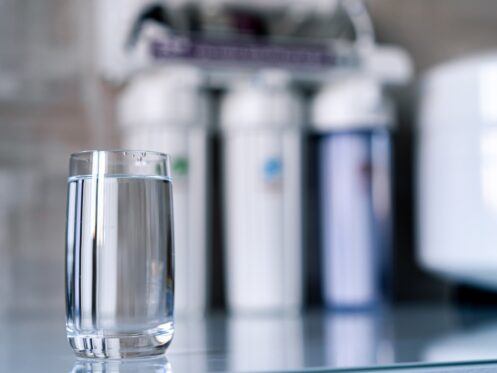Water treatment is important for municipalities and businesses that rely on safe, clean water. It involves purifying water from natural sources such as rivers and lakes for drinking, irrigation, manufacturing processes, industrial use, and other applications. Treating water, both at a plant and using a home water filtration system, helps remove contaminants, including bacteria, viruses, and other microorganisms that could cause illnesses if consumed. Below, we will explore more about water treatment and the processes involved.
What Is Water Treatment?
>Water treatment involves a series of steps designed to remove contaminants from water so that it can be used safely. This is done through physical, chemical, and biological processes designed to remove suspended particles, bacteria, viruses, toxic chemicals, heavy metals, and other contaminants from the water supply before it is distributed to homes and businesses.
The process of treating water also helps to adjust pH levels in the water as well as improve its taste and odor. For residents of Pueblo and the Colorado Springs area, Sveagle can help you with your water treatment needs.
The Processes Involved
Water treatment makes water safe for human consumption. This process involves the steps discussed below.
1. Pre-Treatment
This process involves the removal of large debris, such as sticks and leaves, from the water to prevent damage to equipment further down the line. Pre-treatment also removes any sediment or particles visible to the naked eye. This initial stage helps to ensure that the water is free from any major impurities before it goes through further treatment processes.
2. Coagulation and Flocculation
During this step, chemicals are added to the water to help bind together particulates that are too small to be filtered out in pre-treatment. The floc created by these chemicals helps to settle out any remaining suspended solids in the water before it goes on for further treatment. When the floc settles to the bottom of the tank, removing other waste particles is easier.
3. Sedimentation
During this stage, the impurities in the water start forming visible solids and settle at the bottom of the water storage unit. This process aids in removing sediment and is the first step in turning raw water into clean, usable water.
Typically, this process occurs in a settling basin, where the water can rest for several hours. The heavier particles gradually sink to the bottom. Once the process is complete, the clarified water is transported to the next stage of the water treatment.
4. Filtration
Filtration involves removing suspended solids and impurities from the water by passing it through various filtration media. The water is pushed through these layers, where contaminants are trapped, and the cleaned water flows out.
Filtration processes have evolved, using various methods to achieve the best possible water quality results. From slow sand filters to rapid sand filters to microfiltration, each technique has its benefits and is used depending on the type of contamination present in the water.
5. Disinfection
Disinfection involves the removal of harmful bacteria, viruses, and other microorganisms from the water. This is usually done by adding chlorine or other disinfectants to the water. Chlorine is a popular choice for many water treatment facilities because it acts quickly and effectively, eliminating any pathogens from the water.
Additionally, ultraviolet light can be used to disinfect water. Exposing the water to UV rays will break down and eliminate any harmful microorganisms present in the water, leaving it safe for drinking and other purposes. Through this process, the water is also made free of any unpleasant odors and tastes.
6. Supplementary Treatment and Storage
While most water treatments remove contaminants, these additional steps guarantee that the water is secure and protected to consume. Supplementation is the process of adding chemicals to the water to prevent bacteria and viruses from forming and adding minerals that are essential to our health. Storage of treated water is equally critical to the process.
The treated water is held in reservoirs, tanks, and other structures until it is required for distribution. The tanks are built with steel-reinforced concrete walls to lessen the risk of contamination. The adequate storage of treated water ensures it remains clean and safe during transportation to distribution centers, homes, and businesses.
Water treatment is an essential process that helps to ensure the safety of our drinking water and other water supplies. Through a series of steps, including pre-treatment, coagulation and flocculation, sedimentation, filtration, disinfection and supplementary treatment and storage, the water supply can be purified for home use and business operations. Without this process, you would not have access to safe water for consumption or other uses.
Contact Sveagle for Water Filtration Services
Reach out to Sveagle for a variety of comprehensive plumbing services including water heater repair services, drain cleaning, and water treatment, among other services. We are dedicated to ensuring our customers get the highest quality services. Contact us today!



 SPECIALISTS
SPECIALISTS
